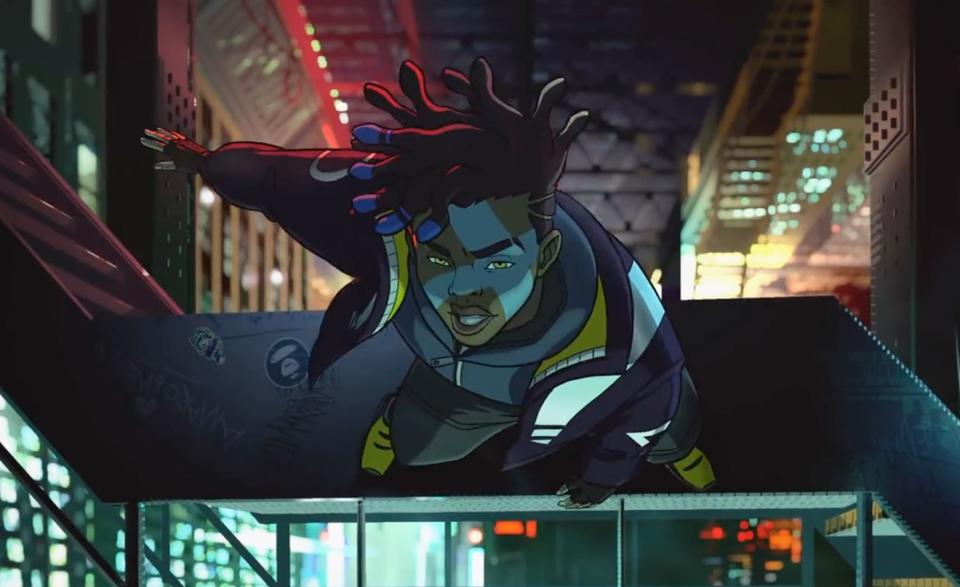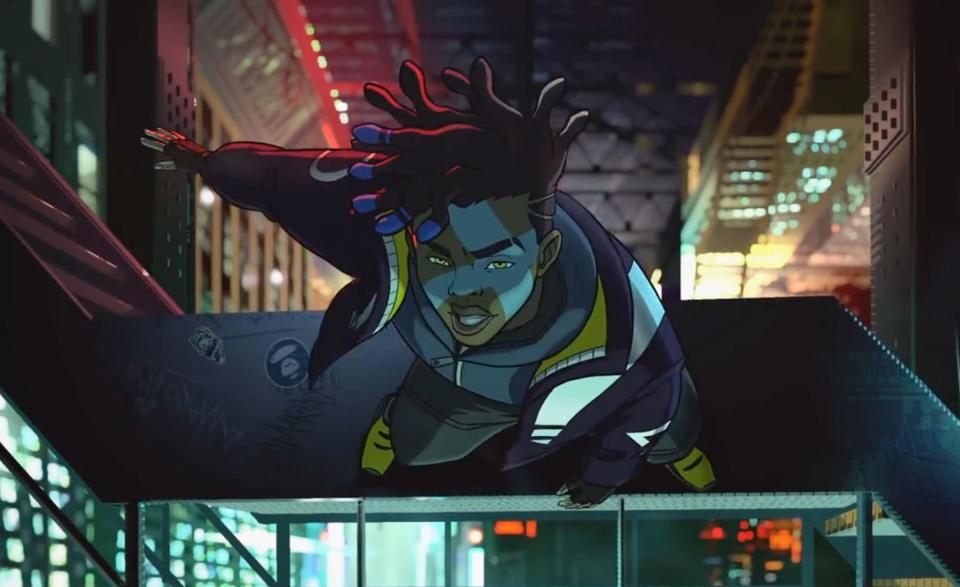Why does Riot Games keep making virtual bands?
True Damage had a live 'holo projection' performance at the League of Legends World Championship.
An unusual concert took place before FunPlus Phoenix and G2 Esports battled for the League of Legends World Championship last weekend. The Grand Finals in Paris opened with Valerie Broussard singing "Awaken," a track released at the start of the year to celebrate the upcoming esports season. The performance ended with a magical blast that threw Broussard and her backup singers into the air.
Controlled lighting and a special fabric mesh with a metallic filament woven into the fibers created a holo-projection effect, according to ESPN. The same technology helped to realize True Damage, a fictional band that features League of Legends characters Akali, Ekko, Senna, Qiyana and Yasuo. These figures, dressed in colorful cyberpunk ware, danced, rapped and sang to accompany their human counterparts, which include artists Becky G, Keke Palmer, SOYEON of (G)I-DLE, Thutmose and Duckwrth.
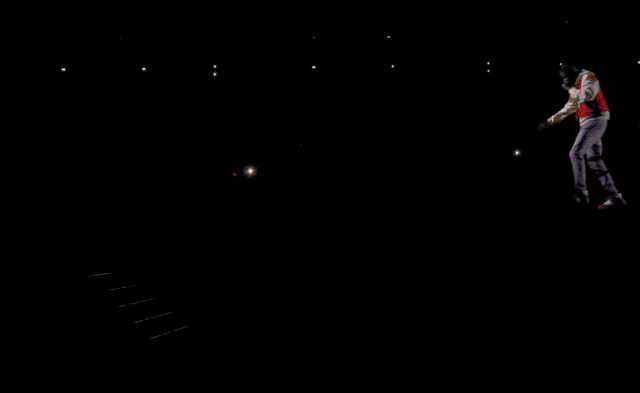
The holographic projections allowed the League champions to 'glitch' out of existence and instantly teleport to another part of the stage. Occasionally, the lights would dim and obscure Thutmose so that a digital recreation could appear on suspended podiums at normally impossible angles. The 15,000-strong crowd in attendance cheered as both the human and fictional parts of True Damage gathered on stage for the final chorus. Shortly afterwards, Cailin Russo and Chrissy Costanza took to the stage to cap off the opening ceremony with a holographic-imbued rendition of "Phoenix," the official anthem for the World Championship.
Riot Games has experimented with virtual bands and technology-focused spectacles before. In 2014, the company created a fictional metal band called Pentakill with League champions Karthus, Kayle, Mordekaiser, Olaf, Sona and Yorick. The act's debut EP, Smite & Ignite, cracked the Billboard Top 40 and hit number one on the iTunes Metal and Rock charts. Three years later, a second album called Gasp of the Undying appeared with cameos by Motley Crue founding member Tommy Lee and Nine Inch Nails alumnus Danny Lohner and Noora Louhimo.
The video game developer brought an augmented reality dragon, known in-game as an Elder Drake, to the World Championship finals a couple of months later. It created a virtual K-pop girl group called K/DA the following year with popular League champions Ahri, Akali, Evelynn and Kai'Sa, voiced by K-pop group (G)I-dle members Miyeon and Soyeon and American singers Madison Beer and Jaira Burns. K/DA has released one track, Pop/Stars, which has over 280 million views on YouTube and features on the popular VR rhythm game Beat Saber.
Last year, K/DA opened the World Championship finals in South Korea with an augmented reality performance similar to 2017. While the real-life performers sang on stage, the virtual champions walked around them in a believable way that was visible on-stream and through huge monitors at the Incheon Munhak Stadium.
Riot's approach to virtual bands is a tad unconventional. Many 'live' concerts, including those for virtual pop singer Hatsune Miku and Splatoon's Squid Sisters, don't show the people who are lending their voices to the characters. It's an obvious move: Why break the illusion for an audience that is so keen to immerse themselves in it? Riot, however, is more than happy to show the human half of its fictional acts on stage. Like Gorillaz, one of the earliest and most famous virtual bands, the developer is almost coaxing viewers to Google the real-life performers and find out what else they've produced.
Is that the company's goal, though? To develop virtual bands that are malleable enough to move between genres and introduce listeners to a broader range of musical artists? The League of Legends community loves the game's characters and are, therefore, more likely to listen to an experimental track than if it randomly queued up on Spotify or Apple Music.
It's unlikely.
Pentakill, K/DA and True Damage probably serve a simpler purpose: to advertise League of Legends.
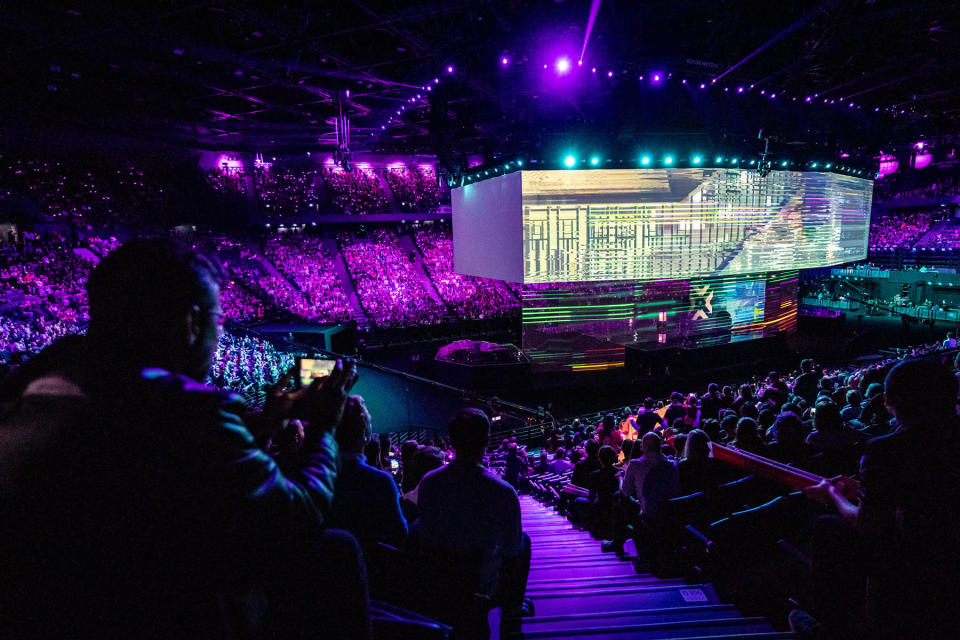
The free-to-play MOBA (multiplayer online battle arena) was released in 2009 -- an eternity ago by modern video game standards. Its popularity and cultural relevance has remained steady through countless smash-hit video game launches including Overwatch, Fortnite and Counter-Strike: Global Offensive. Still, League of Legends is considered an 'old' video game and needs to find new ways of attracting younger players. Riot is constantly adding new champions and game modes such as Teamfight Tactics, which is based on the popular Dota Auto Chess mod. The developer has also poured money into its esports program, launching multiple domestic leagues with household name sponsors including Nike, Mercedes-Benz and Shell.
For the 2019 World Championship, Riot hired Louis Vuitton to make a custom case for its coveted Summoner's Cup. The fashion giant is also designing special champion skins -- alternative character appearances for in-game use -- for True Damage champions Qiyana and Senna. The Quiyana skin was designed by Nicolas Ghesquière, Louis Vuitton's artistic director of women's collections, and released last month, and the Senna skin is due next year.
Riot is arguably the closest to launching and, more importantly, maintaining interest in a Gorillaz for gamers.
During its 10-year anniversary, Riot announced it would be making a digital card game, fighting game and animated series that will use the League of Legends universe.
Virtual bands are just another entrance point for newcomers. You might not know who Qiyana is or have ever played a game of League of Legends. But if you're a huge fan of the character design and the music that artists are releasing through her, you might be inclined to download the League launcher and give it a try.
For some, the idea of a brand-controlled band will be unsettling. True Damage's first track, "Giants," is brazenly League of Legends-themed with lines like "about to deal damage, you know we ain't average." The song has a clear commercial purpose that is just as important, if not moreso, than the artist's desire to make good art and earn enough money to survive.
Most won't care, though. League of Legends fans will be ecstatic because they have another band that is both about and championing the game they love.
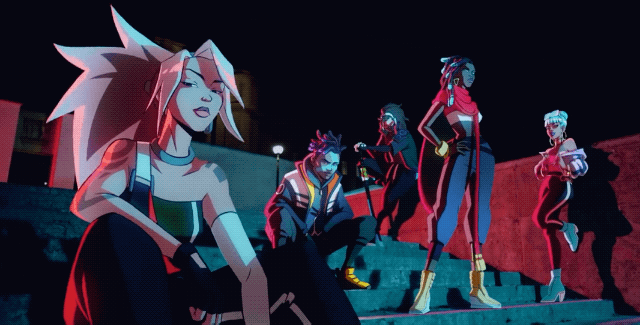
It's no surprise, then, that the track has exploded online. The official music video, animated by The Line (the studio worked on the Gorillaz "Humility" music video and the Super Turbo Atomic Ninja Rabbit internet stunt) currently sits at 7.8 million views. The live performance from the World Championship, meanwhile, has 1.6 million views at the time of writing. These numbers will undoubtedly grow over the next few days and solidify the band's position in weird internet culture. Riot isn't the only one creating virtual bands, but it's arguably the closest to launching and, more importantly, maintaining interest in a Gorillaz for gamers.
Not bad for a company that, to date, has only made a single video game.

